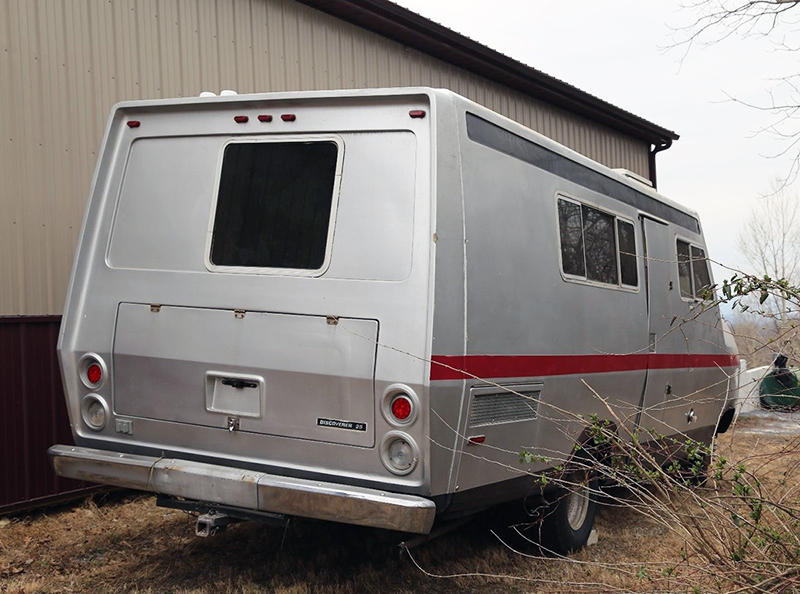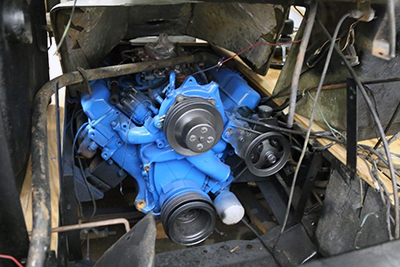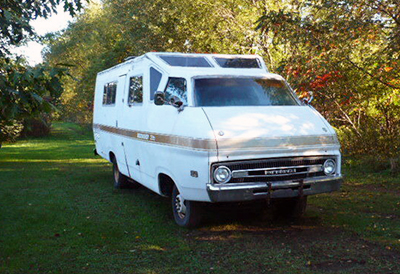If Homer Simpson designed a recreational vehicle, it might look a lot like the Rectrans Discoverer. While unconventional and ungainly, the Discoverer is a case of form following function. The goal of its creator—famed car designer Larry Shinoda, who also penned the 1963 and 1968 Chevrolet Corvette Stingrays—was not great looks. It was all about maximizing aerodynamic efficiency in a very large road-trip vehicle.
The two examples now available on eBay Motors—a silver 1972 Dodge Rectrans Discoverer and a white 1972 Discoverer—are among only 3,300 such vehicles built from 1971 to 1974.

You might hear chuckles when you roll up in a Rectrans but the design was innovative. Check out the ultra-mod rear-window design.

The Rectrans Discoverer rides on a Dodge truck platform and is powered by a 413 cubic-inch Chrysler V-8.
Shinoda, a legendary figure in automotive history, designed the Stingrays, as well as the “Mako Shark” concept Corvette and the Boss 302 Mustang. He teamed up with Bunkie Knudsen, a former GM and Ford executive, to launch Rectrans after they both left Ford in 1969.
Shinoda and Knudsen’s goal was to achieve 10 miles per gallon. That was no mean feat for a 25-foot long, 10,000 pound Dodge chassis motor home powered by a 413 cubic-inch Chrysler V-8 engine. But the team hit the mark. RVlife.com, a publisher of content about recreation vehicles, states that the Rectrans covered the zero-to-60 MPH sprint in just 11 seconds flat while squeaking past the 10-MPG fuel efficiency goal. Legend has it that the Discoverer was the first motorhome to get tested in a wind tunnel—although using Shinoda’s 1:25 scale mock-up.
The nose of the RV looks like a jet airliner cross-bred with a Dodge van, with a front-chin spoiler jutting out beneath the chrome bumper. Take note: There are no front doors. Entry to the cabin is through a single door on the passenger side behind the front seats.

The seller of this 1972 Discoverer will include a second parts vehicle.
The fiberglass bodies of both vehicles listed on eBay Motors are intact. Interior restoration work has begun on one of the Rectrans models, while the other needs to be gutted. The possibilities are endless. Restore one to its original purpose as an RV or use it for a unique food truck (or a tribute to early 1970s design and engineering.)
The Rectrans Discoverer hit the market just before the introduction of the revolutionary GMC Motorhome—like this 1974 model and this 1978 example (both now listed on eBay Motors). While GMC had extensive resources to develop its motor homes, the Discoverer was done on a lean budget and tight time frame.
Forty years later, we are currently experiencing a renaissance in small RV-like vans, such as the Mercedes-Benz Sprinter, Ram Promaster, and Ford Transit. The ability of those much smaller campers to get close to 20 miles per gallon can be traced back to Rectrans. Few would argue that the Discoverer has classic beauty but it pointed the way forward for generations of RV design.





